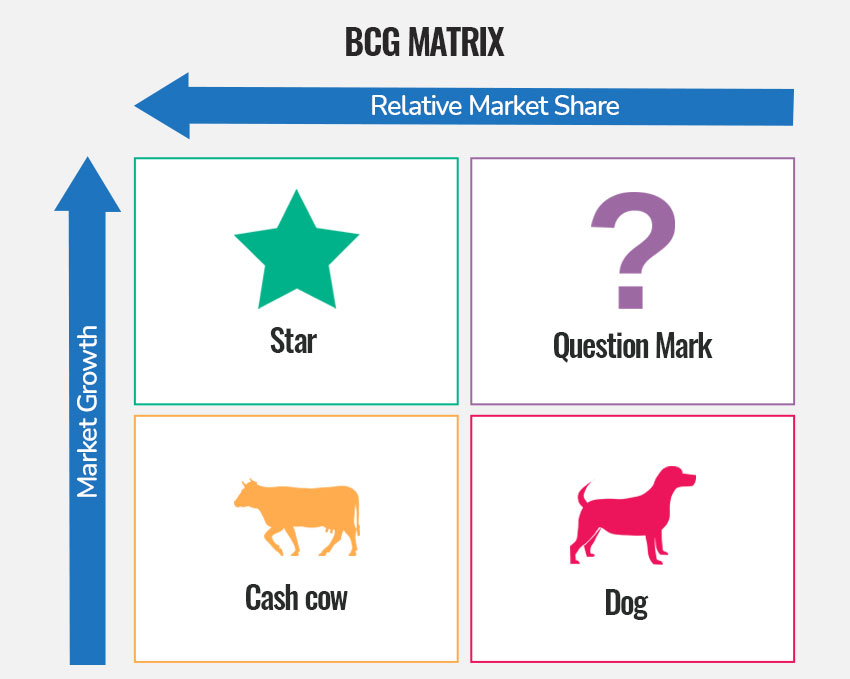
What do L’Oréal, Procter & Gamble, and Unilever have in common? These industry giants dominate their markets by managing multiple distinct brands under one umbrella.
While their brands may compete for consumer attention, the parent companies reap the rewards by capturing diverse market segments. This approach, known as a multi-brand strategy, allows businesses to meet varied consumer needs while maximizing their reach and influence.
What Is a Multi-Brand Strategy?
A company has a multi-brand strategy when its portfolio of products has distinct brands or names. For example, Nestlé has a multi-brand strategy with over 2,000 brands, including KitKat and Nespresso.
A company may want to take on a multi-brand strategy to reach a different audience or create a luxury line to appeal to a consumer willing to pay more for a product.
How Do I Know Which Brand Strategy to Choose?
Imagine you are starting a face cream brand and have two products in development. One is made of the most exclusive and expensive ingredients, and one is affordable. These two face creams would have quite different audiences, right? It is not likely that the same target customer will be interested in both products.
Now you may be thinking, “Okay, but why would I want to have these two creams under different names and brand identities? Isn’t it double the work to run two brands?” You can keep the two products under one brand and call the fancier product a premium version, or you can separate the two so the customer does not make comparisons between the two products.
The downfall of having two distinct products under one umbrella brand is the resulting difficulty in brand management and appeal to the customer. Luxury, eco-friendly, vegan, and all-natural products are marketed differently. If you have products with different benefits and audiences bunched together, you might be evoking cognitive dissonance.
Let us take the Volkswagen Group as an example. They own the Volkswagen brand and the Porsche brand. If they rebranded Porsche as a posh Volkswagen, sales would most likely plummet. The Porsche customers do not see themselves as Volkswagen drivers.
Examples of Multi-Brand Companies
Let us have a look at some brands that have opted for a multi-brand strategy, and why they chose to do it.
L’Oréal
“Because we understand that beauty expectations and needs vary, we have built the richest portfolio of diverse and complementary brands. We want to be able to offer all around the world a perfect choice of brands for all types of consumer needs and desires and for all beauty dreams.”
Brands include: Garnier, Maybelline New York, NYX Professional Makeup, 3CE, Stylenanda, Essie, Dark and Lovely, Mixa, Niely, Kiehl’s, La Roche-Posay, and more.
Procter & Gamble (P&G)
“P&G brands are trusted to provide products of the highest quality and superior performance and value for the daily-use cleaning, health and hygiene needs of consumers around the world.”
Brands include: Pampers, Gain, Tide, Pantene, Always, Crest, Braun, and more.
Unilever
“Our brands around the world are on a global mission to do good. It’s been our goal — and part of our business — for over a hundred years. There’s still lots to do, but together, we can make sustainable living commonplace.”
Brands include: Axe, Dove, Pond’s, Magnum, Ben & Jerry’s, and more.
Multi-Brand Strategy Advantages
Potential to Position Your Brand as a Market Leader
When you build brand awareness, you are more likely to create a loyal following for your brand. A customer may recognize the parent company and trust that they are making a smart decision even though they have never tried a product before. They associate the brand with value and become more inclined to buy other products the company makes.
More Shelf Space
Even though the branding for each product may be completely different and appeal to different consumers, you can create a leg-up on the competition. For example, if you have eight types of shampoo on the shelf, there is less room for competing products. Consumers may not even realize that your company makes all the products because the marketing is unique for each one.
Cater to Customers Who Like to Switch Brands
Even though a customer is happy with a product, it is common for some people to brand hop to see if they like something else better. Companies with a multi-brand strategy can appeal to these types of consumers without leaving the brand.
Brand Reputation
If you are not tracking your brand’s reputation and a crisis occurs, the other brands in your portfolio may not be affected. With a multi-brand strategy, each brand has its own identity and personality, and typically appeals to a different audience. In some cases, consumers may not know which brands are part of the same family.
The Role of Brand Guidelines in Multi-Brand Management
Effective brand guidelines are the cornerstone of a successful multi-brand strategy. In a portfolio with diverse brands, guidelines act as a roadmap, ensuring each brand maintains its unique identity while aligning with the overarching vision of the parent company. Without clear guidelines, inconsistencies can dilute brand equity and create confusion for consumers.
Establishing Clear Brand Identities
For multi-brand strategies to thrive, each brand must have a distinct identity. This involves defining elements like logos, color palettes, typography, tone of voice, and messaging. Brand guidelines should clearly articulate these elements, allowing teams to maintain consistency in all communications and marketing materials.
For example, a luxury brand within the portfolio may emphasize sophistication and exclusivity, while a value-oriented brand focuses on affordability and approachability.
Facilitating Internal Collaboration
When managing multiple brands, it’s common for teams to share resources, such as creative assets or marketing campaigns. Brand guidelines help streamline this process by providing a standardized framework.
Creative workflow tools, like digital asset management (DAM) systems, can house these guidelines and assets, ensuring team members across departments and regions have easy access to the right materials.
Preventing Brand Overlap
One of the biggest challenges in multi-brand management is avoiding overlap between brands. Clear guidelines establish boundaries for each brand, specifying its target audience, core values, and unique selling points. This helps prevent cannibalization within the portfolio and ensures each brand attracts its intended consumer base.
Adapting to Market Changes
Markets evolve, and brands must adapt. Strong brand guidelines provide a foundation that can evolve with the times, accommodating changes in consumer behavior, technology, and cultural trends without compromising the brand’s core identity.
For instance, guidelines might include provisions for how a brand can incorporate sustainability or digital-first practices into its strategy.
Enhancing Consumer Trust
Consistency builds trust, and trust drives loyalty. When consumers see a cohesive and consistent representation of a brand across touch points, it reinforces their confidence in the product or service.
For multi-brand companies, well-documented guidelines ensure every interaction — whether through advertising, social media, or customer service — feels authentic and reliable.
Tools to Support Brand Guideline Implementation
Managing guidelines for multiple brands can be overwhelming without the right tools. Digital asset management systems and creative workflow platforms allow businesses to centralize brand assets, templates, and guidelines.
These tools not only make it easier for teams to adhere to guidelines, but also ensure efficiency by reducing the time spent searching for or recreating assets.
Multi-Brand Strategy Disadvantages
Keeping Brands Distinctly Separate
It can be difficult to keep all brands separate and have a strong identity for each one. If consumers view your brands as interchangeable, you are competing with yourself instead of attracting different consumer groups. Brands need to put more effort into creating and advocating for brand guidelines internally, since a weak brand identity can cause friction within the company.
Loss of Credibility
If consumers see a brand and decide they do not want to purchase products from them anymore, this will negatively impact sales.
Substandard Products
Another disadvantage of a multi-brand strategy is that people may be tougher on newer products because they expect a certain level of quality when they are making a purchase. If a new product does not live up to those same standards, people may be quick to dismiss the product and leave negative reviews.
Spreading Resources Thin
Companies that sell various products should focus on building a strong brand personality for each brand. If the people are not connected with the brands, they will be less likely to purchase them. If this is the case, a company should go back to the drawing board and focus on what is working and what is not instead of trying to release more new products.
One Product Significantly Outperforming the Rest
One of the disadvantages of having multiple brands is that one product may be more profitable than the others. Companies should evaluate if it is worth investing more time and marketing efforts in the lower performing products.
Brand Overlap
If customers decide they are confused about a brand and want to try various products, they could leave the brand umbrella. Too many options may not necessarily be the best thing for some consumers.
The Growth-Share Matrix (BCG Matrix)
The purpose of a multi-brand strategy is to restrict competition, diversify revenue streams, and increase market share. One way to assess if this strategy would benefit your company is to plot various products or brands on a Growth-Share, or BCG, matrix. The Y axis is market growth rate, X represents relative market share. These two axes divide the field into four boxes.
Here Are Brief Introductions to Each of the Four Categories:
-
Cash cows are brands with high market share in a slow-growing industry. These brands typically generate more cash than the amount of cash needed to maintain the business. They are regarded as staid and boring in a “mature” market, yet corporations value owning them due to their cash-generating qualities. They are to be “milked” continuously with as little investment as possible since such investment would be wasted in an industry with low growth. An example of such a company would be a top brand in a stable industry such as banking or oil.
-
Dogs are brands with low market share in a mature, slow-growing industry. These brands or products typically “break even,” generating barely enough revenue to maintain the business’s market share. Owning a break-even unit provides the social benefit of providing jobs and synergies that assist other business units. They also provide stability.
-
Question marks are brands operating with a low market share in a high-growth market. They are a starting point for most businesses. Question marks have the potential to gain market share and become stars, and eventually cash cows when market growth slows. This could be any new company in tech/AI/IoT.
-
Stars are units with a high market share in a fast-growing industry. They are usually question marks all grown up with a market- or niche-leading trajectory.
Bringing It All Together
Now, how does a plot like this translate to a multi-brand company? It has to do with long-term business success and diversification. As BCG stated in 1970:
Only a diversified company with a balanced portfolio can use its strengths to truly capitalize on its growth opportunities. The balanced portfolio has:
-
Stars whose high share and high growth assure the future.
-
Cash cows that supply funds for that future growth.
-
Question marks to be converted into stars with the added funds.
As your company plans, it is vital to think about new business opportunities, mergers, and considering new brands. If you currently have an established product under one brand name, that’s great. But keep in mind that times change, and markets come and go. To stay in the race, the multi-brand approach might be worth investing in.
Does a Multi-Brand Strategy Make Sense for You?
The examples we mentioned are all massive corporations with resources to develop new brands. If you are launching your business, focus on developing a strong brand identity first. Your next step should be to build trust with your audience, and then create more brands.
If you fail to develop strong brand awareness, all your products could fail. To achieve long-term success for your business, it is essential to focus on your why.
Every Strong Brand Needs to Know:
-
Why are you in business?
-
Who is your target audience?
-
How are you going to solve your customers’ problems?
-
What makes your brand stand out from the competition?
Weigh your options before you decide to take on a multi-brand strategy.
Embrace a Multi-Brand Strategy Today With Lytho
A multi-brand strategy can unlock significant growth opportunities, but it requires careful planning and resource management. By leveraging tools like clear brand guidelines and innovative technologies, businesses can overcome challenges and maintain consistency across their portfolio.
Ready to explore how a multi-brand strategy can elevate your business? Learn how Lytho’s tools can streamline brand management and drive success across your portfolio. Schedule a demo today!
Do you want to give yourself and your creative team more room for creative stimulation by automating the boring stuff? Lytho helps you streamline your entire workflow and harmonize all brand collateral under a single, uniform platform. Feel free to reach out to us by scheduling a demo and learning how our creative solutions can boost the effectiveness of your creative projects. We look forward to speaking with you!

Ready to simplify your creative operations and start having a little fun at work again? Schedule time to talk with us.
Let us show you how Lytho’s Creative Operations Platform helps in-house creative and marketing teams do better work, ease the stakeholder experience, and stay on brand.
Schedule a Demo posted by
posted by 




